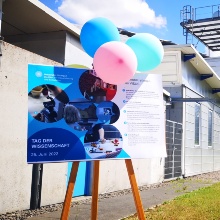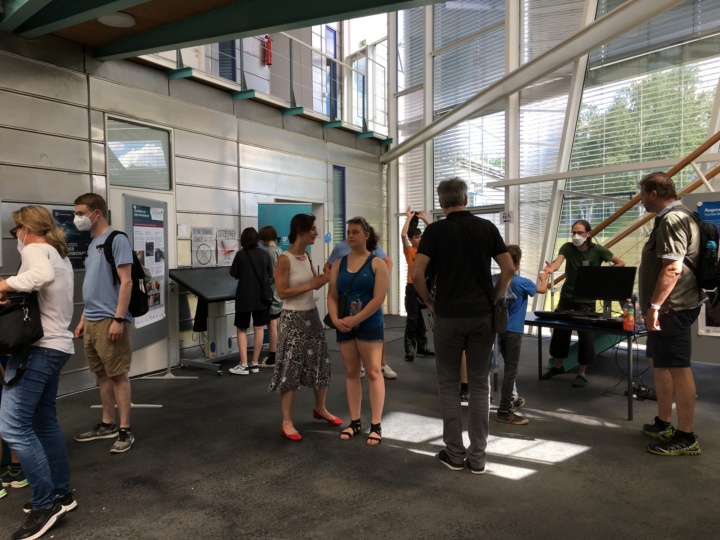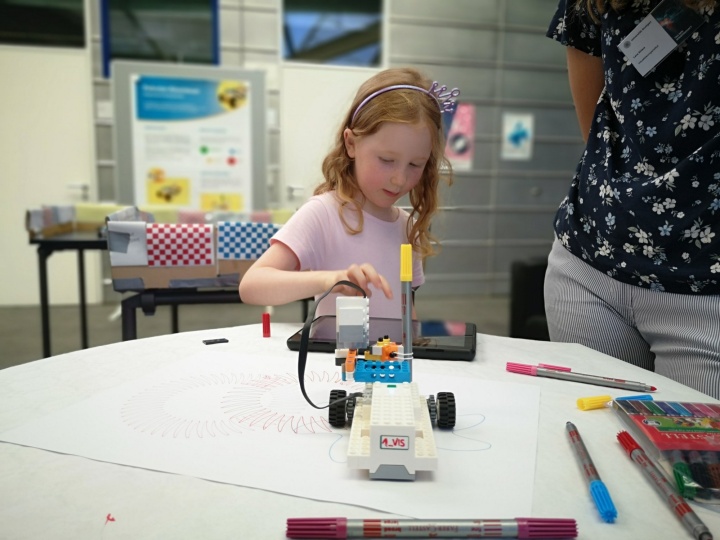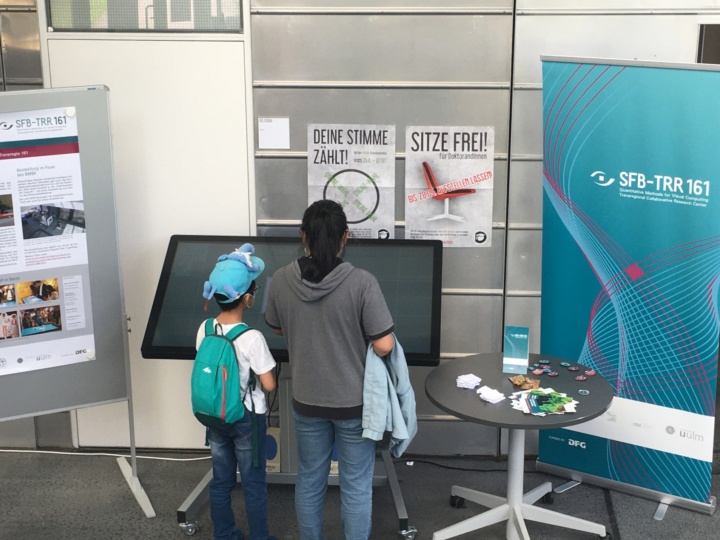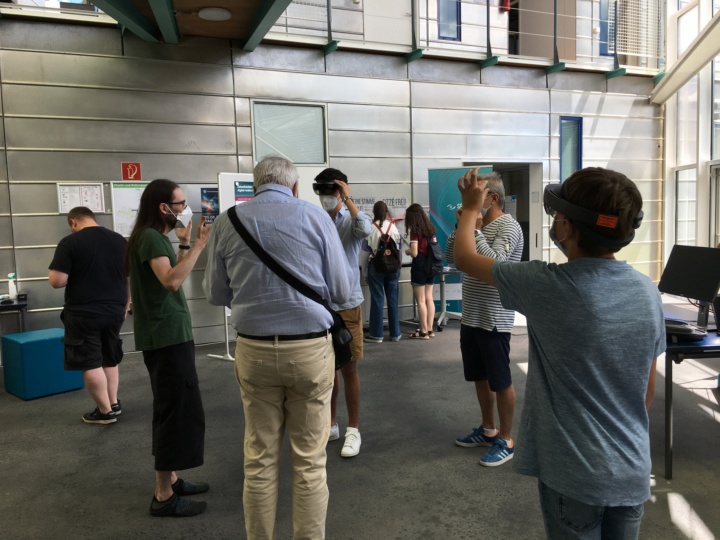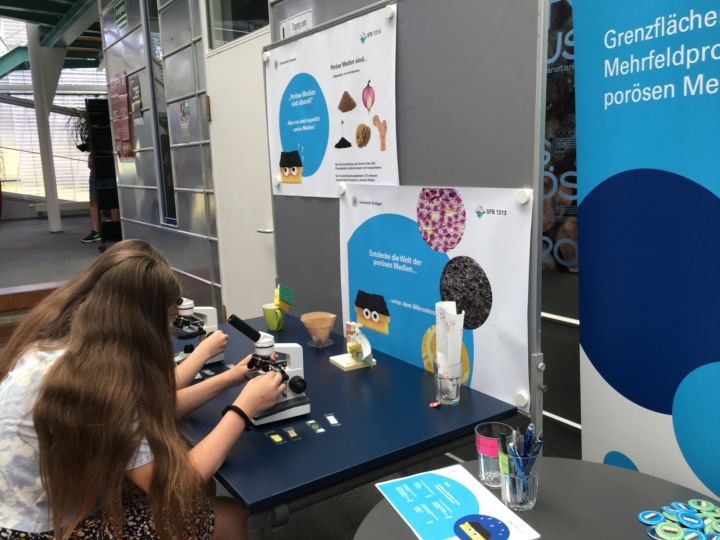After two years of pandemic, the University of Stuttgart opened its doors again for the "Tag der Wissenschaft" - the annually open science day. Members of the university showed their laboratories, their research, exhibits, or experiments. This year, it took place on 25 June 2022. The Visualization Research Center (VISUS) participated this year with an exhibition for kis and adults. Despite the high temperatures and the large number of visitors on the campus Vaihingen, over 150 visitors came to VISUS to immerse themselves into visual computing and porous media research. Also, the popcorn corner was very well frequented. We would like to thank all those who helped to make our exhibition a complete success!
Lego Robot Table for little software engineers
Coding geeks could programme robots at the Lego robot table at three stations and become a robot expert. The Lego robots, equipped with a programmable motor as well as a colour sensor and distance meter, could be programmed and controlled via app and tablet. At the first station, a robot could be moved in an obstacle course. At the second station, kids could programme a robot to draw their individual mandala artwork. At the third station, it was possible to create and programme a cooling fan, which was perfect for the hot temperatures on Saturday.
SFB-TRR 161: Visual Computing
The eye tracking games allowed visitors to try out how computer games can be controlled with eye movements and how this technology makes it possible to further develop visualizations or make software more intuitive. At the touch table of the SFB-TRR 161, visitors could interactively experience what virtual and mixed reality applications will be used for in future working environments.


